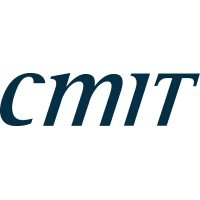Not sure if CyberGlobal is right for you?
Talk to a Franchise Advisor who can match you with your perfect franchise based on your goals, experience, and investment range.
Talk to an Expert
CyberGlobal
How much does CyberGlobal cost?
Initial Investment Range
$102,050 to $123,900
Franchise Fee
$75,000
CyberGlobal businesses provide a range of cybersecurity products and services designed to help businesses protect their digital assets and infrastructures.
Enjoy our partial free risk analysis below
Unlock the full risk analysis to access 9 more categories covering 100+ risks.
CyberGlobal April 2, 2025 FDD Risk Analysis
Free FDD Library AI Analysis Date: August 19, 2025
DISCLAIMER: Not Legal Advice - For Informational Purposes Only. Consult With Qualified Franchise Professionals.
Franchisor Stability Risks
Start HereDisclosure of Franchisor's Financial Instability
High Risk
Explanation
The financial statements for CyberGlobal USA LLC (CGU) show it is in a precarious financial position. As a new company, its audited balance sheet for 2024 reveals a negative net worth of $(12,411) with total liabilities of $12,720 versus only $309 in cash assets. The FDD explicitly flags its financial condition as a special risk, which calls into question its ability to provide support and remain solvent. This financial weakness is a significant concern for you.
Potential Mitigations
- Your accountant must thoroughly review the financial statements, including all footnotes, to assess the franchisor's viability and reliance on affiliate support.
- Inquire with your attorney about the protections offered by the state-mandated fee deferrals mentioned in the State Addenda (Exhibit F).
- A business advisor can help you assess the operational risks stemming from a franchisor with such limited capital.
High Franchisee Turnover
Low Risk
Explanation
This risk was not identified in the FDD package because the franchise system is new and has no history of franchisee turnover. Item 20 shows zero terminations, non-renewals, or other cessations. However, high turnover is a critical indicator of systemic problems in a mature system, such as poor profitability, inadequate support, or franchisee dissatisfaction. You should monitor this data in future FDDs if you become a franchisee.
Potential Mitigations
- If you proceed, your business advisor should help you plan to track future Item 20 data to monitor system health.
- Speaking with the initial group of franchisees in a year or two will provide insight into their satisfaction and the system's viability.
- An accountant can help you model different scenarios to understand the financial breaking point if the system proves unstable.
Rapid System Growth
Low Risk
Explanation
This risk was not identified, as the system is new with no existing franchisees and therefore no history of rapid growth. However, Item 20 projects six new franchise openings in the next fiscal year. Given the franchisor's extremely weak financial position as shown in Item 21, even this modest growth could strain its ability to provide the promised training and support. You should be cautious about the franchisor's capacity to support new units.
Potential Mitigations
- Your business advisor can help you question the franchisor about its specific plans and budget for scaling its support infrastructure.
- It is important to have your accountant review the franchisor's ongoing financial health to see if it can support any growth.
- Consulting with your attorney about the enforceability of the support obligations outlined in Item 11 is a prudent step.
New/Unproven Franchise System
High Risk
Explanation
CGU is a new, unproven franchisor, formed in July 2024 with no prior operating history, as stated in Item 1. Item 20 data confirms there are no existing franchised or company-owned outlets. The FDD explicitly highlights this short operating history as a special risk. Investing in a new system is inherently more speculative as the business model, brand recognition, and support systems are undeveloped and untested in the market, which may elevate your risk of failure.
Potential Mitigations
- A thorough vetting of the management team's prior industry and franchising experience with a business advisor is critical.
- Your accountant should perform a detailed analysis of the business model's viability and your potential return on investment.
- Engaging an attorney to negotiate for more franchisee-favorable terms to offset the increased risk is advisable.
Possible Fad Business
Medium Risk
Explanation
The cybersecurity services industry is established and not typically considered a fad. However, the specific market niche and service offerings of CyberGlobal are new and unproven. The long-term demand for its particular business model is unknown. You should consider whether the company's approach offers a sustainable competitive advantage or if it relies on a specific technology or method that could quickly become obsolete, posing a risk to the long-term viability of your investment.
Potential Mitigations
- A business advisor can help you conduct independent market research to assess the long-term demand for these specific cybersecurity services.
- It would be wise to ask the franchisor about their plans for research, development, and adaptation to evolving cyber threats.
- Your financial advisor should help you evaluate the business model's resilience to market shifts and technological changes.
Inexperienced Management
Low Risk
Explanation
This risk was not identified in the FDD package. The key personnel listed in Item 2 appear to have several years of experience in the cybersecurity industry through their work with the franchisor's Romanian affiliates. However, their experience in managing a U.S.-based franchise system is new. The success of a franchise often depends on management's understanding of both the industry and the unique dynamics of a franchisor-franchisee relationship in the target country.
Potential Mitigations
- A business advisor should help you probe the specific franchising experience of the management team during your discussions.
- Verifying the backgrounds and track records of the individuals listed in Item 2 is a crucial due diligence step.
- Consider asking your attorney how the franchisor's limited U.S. franchise management experience might impact their support obligations.
Private Equity Ownership
Low Risk
Explanation
This risk was not identified, as Item 1 does not indicate that CyberGlobal USA LLC (CGU) is owned by a private equity firm. Private equity ownership can introduce risks, such as a focus on short-term profits over the long-term health of the system or a future sale of the franchise brand. While not present here, you should always be aware of the franchisor's ownership structure.
Potential Mitigations
- Your attorney can help you understand the franchisor's ownership structure as disclosed in Item 1.
- If a franchisor is acquired by a private equity firm in the future, it is important to understand the potential changes in strategy.
- A business advisor can help you research the track record of any potential future private equity owner with other franchise brands.
Non-Disclosure of Parent Company
Low Risk
Explanation
This risk was not identified in the FDD. Item 1 states that CGU does not have a parent entity. The franchisor does, however, have significant relationships with foreign affiliates who own the intellectual property and act as key suppliers. This affiliate structure presents its own set of risks related to dependency and control, which should be carefully evaluated, but the specific risk of a non-disclosed parent company is not present.
Potential Mitigations
- Your attorney should review the affiliate relationships described in Item 1 to ensure you understand all controlling parties.
- An accountant can help analyze the financial interdependence between the franchisor and its disclosed affiliates.
- It is wise to ask the franchisor to clarify the reporting structure and decision-making authority between itself and its affiliates.
Predecessor History Issues
Low Risk
Explanation
This risk was not identified in the FDD package. Item 1 clearly states that the franchisor, CyberGlobal USA LLC, does not have a predecessor. Predecessor history is important because it can reveal past issues with a franchise system, such as litigation, bankruptcy, or high franchisee turnover, that might have been inherited by the current franchisor. The absence of a predecessor means you are evaluating a completely new entity.
Potential Mitigations
- Confirming the lack of a predecessor with your attorney is a simple but necessary step in due diligence.
- A business advisor can help you understand that the absence of a predecessor means there is no historical system data to analyze.
- Your evaluation should focus entirely on the current franchisor's management team and financial state, as an accountant would advise.
Pattern of Litigation
Low Risk
Explanation
This risk was not identified. Item 3 of the FDD states that no litigation is required to be disclosed. A clean litigation history is positive, especially for a new franchisor. However, it's important to remember that as a new entity, there has been little time for disputes to arise and mature into litigation. You should monitor this item in future FDDs.
Potential Mitigations
- Your attorney can conduct an independent public records search to confirm the absence of litigation against the franchisor or its principals.
- Asking the franchisor directly about any informal disputes that have not yet resulted in litigation is a prudent step.
- A business advisor can help you establish a process for monitoring the franchisor's litigation history over time.
Disclosure & Representation Risks
Example Risk: Franchisee Financial Obligations
Blue Risk
Explanation
This risk involves the financial obligations that a franchisee must meet, including initial fees, ongoing royalties, and other required payments. Understanding these obligations is crucial for long-term success.
Potential Mitigations
- Carefully review the Franchise Disclosure Document (FDD) and consult with a franchise attorney to fully understand all financial commitments before signing.
- Conduct regular risk assessments
- Implement monitoring and reporting systems
Unlock Full Risk Analysis
Purchase the complete risk review to see all 102 risks across all 10 categories.
Financial & Fee Risks
Example Risk: Franchisee Financial Obligations
Blue Risk
Explanation
This risk involves the financial obligations that a franchisee must meet, including initial fees, ongoing royalties, and other required payments. Understanding these obligations is crucial for long-term success.
Potential Mitigations
- Carefully review the Franchise Disclosure Document (FDD) and consult with a franchise attorney to fully understand all financial commitments before signing.
- Conduct regular risk assessments
- Implement monitoring and reporting systems
Unlock Full Risk Analysis
Purchase the complete risk review to see all 102 risks across all 10 categories.
Legal & Contract Risks
Example Risk: Franchisee Financial Obligations
Blue Risk
Explanation
This risk involves the financial obligations that a franchisee must meet, including initial fees, ongoing royalties, and other required payments. Understanding these obligations is crucial for long-term success.
Potential Mitigations
- Carefully review the Franchise Disclosure Document (FDD) and consult with a franchise attorney to fully understand all financial commitments before signing.
- Conduct regular risk assessments
- Implement monitoring and reporting systems
Unlock Full Risk Analysis
Purchase the complete risk review to see all 102 risks across all 10 categories.
Territory & Competition Risks
Example Risk: Franchisee Financial Obligations
Blue Risk
Explanation
This risk involves the financial obligations that a franchisee must meet, including initial fees, ongoing royalties, and other required payments. Understanding these obligations is crucial for long-term success.
Potential Mitigations
- Carefully review the Franchise Disclosure Document (FDD) and consult with a franchise attorney to fully understand all financial commitments before signing.
- Conduct regular risk assessments
- Implement monitoring and reporting systems
Unlock Full Risk Analysis
Purchase the complete risk review to see all 102 risks across all 10 categories.
Regulatory & Compliance Risks
Example Risk: Franchisee Financial Obligations
Blue Risk
Explanation
This risk involves the financial obligations that a franchisee must meet, including initial fees, ongoing royalties, and other required payments. Understanding these obligations is crucial for long-term success.
Potential Mitigations
- Carefully review the Franchise Disclosure Document (FDD) and consult with a franchise attorney to fully understand all financial commitments before signing.
- Conduct regular risk assessments
- Implement monitoring and reporting systems
Unlock Full Risk Analysis
Purchase the complete risk review to see all 102 risks across all 10 categories.
Franchisor Support Risks
Example Risk: Franchisee Financial Obligations
Blue Risk
Explanation
This risk involves the financial obligations that a franchisee must meet, including initial fees, ongoing royalties, and other required payments. Understanding these obligations is crucial for long-term success.
Potential Mitigations
- Carefully review the Franchise Disclosure Document (FDD) and consult with a franchise attorney to fully understand all financial commitments before signing.
- Conduct regular risk assessments
- Implement monitoring and reporting systems
Unlock Full Risk Analysis
Purchase the complete risk review to see all 102 risks across all 10 categories.
Operational Control Risks
Example Risk: Franchisee Financial Obligations
Blue Risk
Explanation
This risk involves the financial obligations that a franchisee must meet, including initial fees, ongoing royalties, and other required payments. Understanding these obligations is crucial for long-term success.
Potential Mitigations
- Carefully review the Franchise Disclosure Document (FDD) and consult with a franchise attorney to fully understand all financial commitments before signing.
- Conduct regular risk assessments
- Implement monitoring and reporting systems
Unlock Full Risk Analysis
Purchase the complete risk review to see all 102 risks across all 10 categories.
Term & Exit Risks
Example Risk: Franchisee Financial Obligations
Blue Risk
Explanation
This risk involves the financial obligations that a franchisee must meet, including initial fees, ongoing royalties, and other required payments. Understanding these obligations is crucial for long-term success.
Potential Mitigations
- Carefully review the Franchise Disclosure Document (FDD) and consult with a franchise attorney to fully understand all financial commitments before signing.
- Conduct regular risk assessments
- Implement monitoring and reporting systems
Unlock Full Risk Analysis
Purchase the complete risk review to see all 102 risks across all 10 categories.
Miscellaneous Risks
Example Risk: Franchisee Financial Obligations
Blue Risk
Explanation
This risk involves the financial obligations that a franchisee must meet, including initial fees, ongoing royalties, and other required payments. Understanding these obligations is crucial for long-term success.
Potential Mitigations
- Carefully review the Franchise Disclosure Document (FDD) and consult with a franchise attorney to fully understand all financial commitments before signing.
- Conduct regular risk assessments
- Implement monitoring and reporting systems
Unlock Full Risk Analysis
Purchase the complete risk review to see all 102 risks across all 10 categories.




